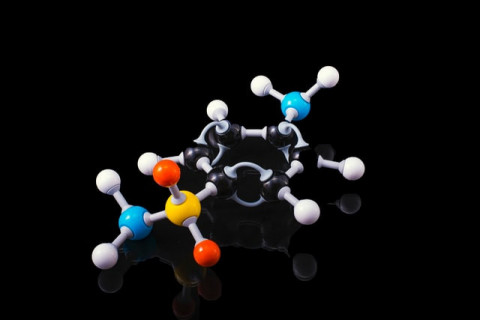
7 min
0
10.04.2022

Chemistry assignments are challenging to solve for most students, and they become more complex from year to year. Particular problems arise with the search for molecular mass, molar mass, and tasks in this direction. In our tutorial, we will look at how to find the molar mass of sodium chloride.
NaCl: What Is This Substance?
The chemical formula: NaCl.
Molar mass: 58,44277 g/mol.
The number of atoms: 2 - Na, Cl.
Melting point: 800.8 ° C.
Boiling point: 1465 ° C.
Solubility: in water, in methanol, in ammonia.
Sodium chloride is the sodium salt of hydrochloric acid. It is included in table salt as the main component. It is present in large quantities in seawater and is a precondition for its salty taste. Also, in natural conditions, it is found as mineral halite (rock salt).
In its pure form, this salt looks like a colorless free-flowing crystalline mass with a salty taste. Taste and smell are usually absent. If combined with any impurities, it can have different shades: bluish, purple, pink, yellowish, or grayish.
In the chemical industry, scientists use salt to create various materials, such as sodium carbonate, gaseous chlorine, sodium hydroxide, bleach, sodium sulfate, and metallic hydrochloric acid. It forms the "Big Four" mineral raw materials most important for the chemical industry with bituminous coal, limestone, and sulfur.
How To Find NaCl Molar Mass?
To find the molar mass of NaCl, you need to follow the algorithm:
- Prepare the periodic table. You can take it from the book or open it on Wikipedia. You will need a periodic table to determine the valence and atomic weight of substances in a chemical formula.
- Then correctly formulate the chemical formula. You can use the periodic table to understand how substances interact with each other. For example:copper sulfateCuSO4
When composing formulas, open the periodic table and find out the valencies of the elements. This is a good trick if you don't know the valency by heart. This will help you write formulas faster and more accurately.sodium chloride NaCl calcium carbonate CaCO3 potassium carbonate K2CO3 magnesium oxide MgO - You can now begin to calculate the molar mass of NaCl. Again refer to the periodic table and take from the weight of atoms in the cell of a chemical element. Then you get a formula like this:
Mr [NaCl] = Ar [Na] + Ar [Cl] = 22,98976928 + 35,453 = 58,44276928
As you can see, to calculate the molar mass of a substance, it is enough to add up all the elements of the chemical formula.
- It remains for you to determine the mass of one molecule of each of these chemical elements, using the Avogadro number:
m (NaCl) = Mr (NaCl) / NA = 58 / 6,02 · 1023 = 9,6 · 1023 g
An Example of How To Solve Tasks With Moles
Task: Determine the mass of 5 mol of sodium chloride.
Decision: NaCl + AgNO3 = NaNO3 + AgCl
Consider sodium chloride. We can find its mass from the mass of the solution:
m = 292,5 · 0,1 = 29,25 grams
Consider silver nitrate. We can find its mass from the mass of the solution:
m = 1500 · 0,1 = 150 grams
We have information about two substances. Based on the data, it is clear that one of them is in excess, the other is in short supply.
Let's calculate their amount of substance:
n (NaCl) = m / M = 29,25 / 58,5 = 0,5 mol
n (AgNO3) = m / M = 150/170 = 0,882 mol
We see that the amount of silver nitrate substance is greater, which means sodium chloride in excess.
Let's calculate the mass of 5 mol of sodium chloride:
n (AgCl) = n (NaCl) = 0,5 mol - according to the reaction equation
Sludge mass m = n · M = 0,5 mol · 143,5 = 71,75 grams
Answer: the mass of 5 mol of sodium chloride is exactly 71,75 grams.
Finding NaCl in Nature
In the natural environment, sodium chloride is present in the mineral halite form, which forms deposits of rock salt in sedimentary rocks. The substance can also be found on the walls of volcanic craters.
This compound's incredible volumes are found in seawater, from each ton of which 1.3 kg of NaCl can be obtained. But that's not all. Splashes of seawater evaporate, releasing sodium chloride into the atmosphere. If we take a cloud at an altitude of 1.5 km, then a third of its droplets, the size of which exceeds 10 microns, contain salt. It is also present in snow crystals.
NaCl Production
The modern production of edible salt is a completely mechanized and automated process. This product's mass production looks like the evaporation of seawater, brines from salt sources, the development of salt mines, or the extraction of rock salt. Among the largest producing countries: China, the USA, Germany, India, and Canada.
As for laboratory synthesis, there is no need for it, as in industrial production. This is naturally explained by the significant natural reserves of the specified substance. However, laboratory production is possible. Sodium chloride can be synthesized as a main or by-product in the following ways:
- exothermic reaction when using a combination of simple substances Na + Cl;
- neutralization of the most common alkali (caustic soda NaOH) with hydrogen chloride (HCl).
Before you start practicing, you need to understand the theory. It is important! Without a theory, you will get confused about electrons, formula units, subscripts, molarity. Without knowing simple terms, you will not understand where chemical reactions, formulas, calculations come from.
What is Mole in Chemistry?
The smallest particles - molecules, atoms, ions, electrons - are involved in chemical processes. The number of such particles, even in a small portion of a substance, is huge. Therefore, to avoid mathematical operations with large numbers, to characterize the amount of a substance participating in a chemical reaction, scientists use a particular unit - the mole.
A mole is a unit of measure for the amount of a substance. This unit is to be designated by the sign v. 1 mole is the amount of a substance that contains the same number of structural units (atoms, molecules, ions, radicals) as atoms are contained in 0,012 kg of the carbon isotope 12C, namely:
NA = 6,02 · 1023 mol-1 - Avogadro's number.
Avogadro's number is huge. Let's compare: if you collect 6,02 · 1023 balls with a radius of 14 centimeters, their total volume will be approximately the same volume that our entire planet Earth occupies.
To determine the number of atoms in a certain amount of a substance, you must use the following formula: N = ν · NA, where N is the number of particles (atoms or molecules).
For example, let's determine the number of aluminum atoms contained in 2 mol of aluminum substance:
N(Al) = ν(Al) · NA.
N(Al) = 2 mol · 6,02 · 1023mol-1 = 12,04·1023
Molar And Molecular Weight
The amount of a substance is one mole, a portion that necessarily contains 6,02 · 1023 particles, has a mass characteristic of this particular substance. For example, one mole of iron Fe corresponds to 56 g, one mole of water H2O corresponds to a mass of 18 g. Scientists call this characteristic of a substance molar mass and are designated M.
The molar mass of a substance is numerically equal to the relative atomic mass of the substance consisting of atoms. The relative molecular mass of the substance consists of molecules. This numerical coincidence is explained by the fact that one gram contains 6,02 · 1023 atomic mass units, in which the relative atomic and molecular weights are expressed.
Since molar mass indicates the mass of one mole, it has the dimension of g/mol. Thus, you can calculate the molar mass similarly to calculate the relative molecular mass of a substance. It is determined as the sum of the relative atomic masses of the elements that make up the substance, taking into account their amount. But it would help if you remembered that the relative atomic and relative molecular weights are dimensionless quantities, and the molar mass is expressed in g/mol.
You should clearly understand the difference between molar mass and molecular mass, realizing that they are equal only numerically and differ in dimension. The molecular weights of complex molecules can be determined by adding up their constituent elements' molecular weights. For example, the molecular weight of water (H2O) is MH2O = 2 MH + MO = 211 + 16 = 18 amu.



